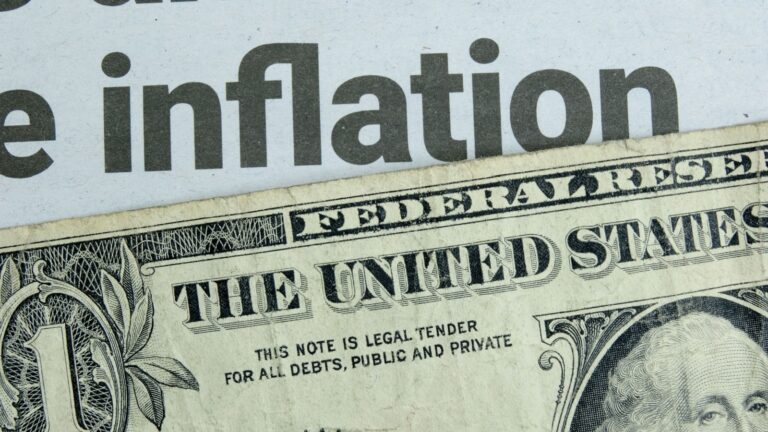With prices continuing to rise on everything from bread to gas, Americans across the country have been burdened with a costly new normal. Inflation continues to grab headlines and move markets as the change in consumer prices eats away at budgets and makes life more expensive.
This begs the question: What is inflation?
Inflation refers to the gradual (or not so gradual) rise in prices over time. It can also be considered the rate at which the purchasing power of currency deteriorates. Simply put, over time, a given amount of money will purchase fewer units of goods today than it did in months and years prior.
Not all goods experience inflation equally. After all, the cost of a soda might not vary much from one year to the next. Meanwhile, gas prices can change dramatically in just days or weeks. That’s why inflation gauges, like the consumer price index (CPI), measure changes in a constructed “basket of goods” intended to reflect the state of prices in the overall economy.
Inflation is generally viewed as a result of a country’s money supply growing faster than it’s economy. Thus, the central bank is tasked with monitoring and regulating the money supply in order to keep price growth at acceptable levels, usually by adjusting interest rates.
Worth noting: Inflation applies only if prices increase. When prices fall, it’s actually called “deflation.” If prices decelerate, or continue to increase but at a slower rate than in the recent past, it’s called “disinflation.”
While inflation and disinflation are common in healthy economies, deflation is comparatively unusual. Deflation typically reflects some sort of structural imbalance in the economy and can cause problems if left unchecked.
What Is Inflation?
Inflation has been an especially hot topic since the Covid-19 pandemic — and for good reason. Prices soared as Americans became flush with cash in the wake of generous stimulus payments.
By lowering interest rates to rock-bottom levels and essentially funneling cash into the system, the U.S. economy was kept solidly afloat during the pandemic, at the cost of inflation.
Back in June 2022, inflation reached its peak at 9.1% annually. This means prices were 9.1% higher in June 2022 than in the same month the year before.
Since then, with the help of the highest interest rates in decades, price growth has eased to a pace of between 3% and 4%. While this is still higher than the Federal Reserve’s preferred 2% inflation level, it’s a significant improvement. This also means the U.S. is currently in a disinflationary cycle.
Although inflation does essentially make your cash on hand less valuable over time, and rampant inflation known as hyperinflation is a destructive and dangerous force in an economy, inflation in itself isn’t a pure negative. Indeed, mild inflation is frequently indicative of a healthy, productive and growing economy.
On the date of publication, Shrey Dua did not hold (either directly or indirectly) any positions in the securities mentioned in this article. The opinions expressed in this article are those of the writer, subject to the InvestorPlace.com Publishing Guidelines.

